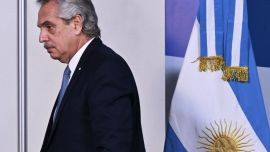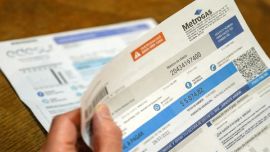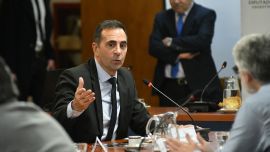The expropriation of the Vicentin agri-business conglomerate will be the eight nationalisation with the surnames of Kirchner or Fernández (or both for that matter) at the presidential helm, in a sequence beginning with the Correo Argentino post office in 2003.
The three Kirchner presidencies between 2003 and 2015 expropriated seven companies ranging from such iconic names as YPF and flagship carrier Aerolíneas Argentinas to the almost broke Aguas Argentinas, while also creating six new state firms and winding up five state companies, thus taking the total under public ownership up to 52. The combined payroll of those (also including the huge Banco Nación) totals 104,200 employees.
The list of nationalisations is headed by Aerolíneas (2008) and YPF (2012) – strategic companies incorporating over 30,000 workers into the state payroll – and also includes Aguas y Saneamientos (AySA) waterworks (2006), FADEA aircraft factory (2010), Tandanor shipyards (2007) and Ferrocarriles Argentinos railways.
Nevertheless, Vicentin marks a first in at least two senses – it’s a state début into the agricultural sector and the first case of a company never previously under public ownership.
Some of these nationalisations (notably and most recently YPF) have ended up triggering brusque financial and legal clashes and the heavily indebted Vicentin may prove to be no exception. Placed under state trusteeship last Monday, it will operate for now within the orbit of the new YPF Agro division prior to nationalisation.
Many of the Kirchner-era state takeovers were simply reversals of the privatisations during the Carlos Menem presidency (1989-1999), starting with Correo Argentino, previously run by the Macri group since 1997. Two of the earlier nationalisations – the Thales Spectrum radio-electric company (2004) and the Greater Buenos Aires waterworks, previously managed by Suez since 1993 – were both at the expense of French interests accused of not meeting investment pledges while between 2004 and 2007 the various suburban railway lines were brought into state hands (later to be followed by the Belgrano freight line in 2013).
A 20 percent stake in Eduardo Eurnekian’s Aeropuertos Argentinos 2000 running 32 airports nationwide and Tandanor (2007) rounded out the state acquisitions under Néstor Kirchner.
Cristina Fernández de Kirchner began her presidency by angling for farm money in the form of export duties rather than Vicentin-style expropriations, but the frustration of that drive led her to eliminate the AFJP private pension funds in late 2008 in favour of the current state system. The two biggest nationalisations – the expropriations of airlines Aerolíneas and Austral (2008) paying the symbolic sum of one peso and 51 percent of YPF (2012) – were also her work.
But in 2017 the International Centre for Settlement of Investment Disputes (CIADI in its Spanish acronym) ruled that the Spanish Marsans group (which declared bankruptcy in 2007) was owed US$320 million. The Mauricio Macri presidency paid up US$245 million two years later while litigation for YPF compensation (whose rights running up to US$9 billion were purchased by two investment funds) continues to this day in a Manhattan court, as New York judge Loretta Preska ruled late last week. The Ciccone Calcográfica money-printers was also a nationalisation which rebounded badly, resulting in Fernández de Kirchner’s former vice-president Amado Boudou still being under house arrest after being sentenced to 70 months in prison for irregularities in a transaction which was not supposed to cost the state a peso but ended up being 350 million pesos, according to a court ruling.
Apart from YPF (created in 1922 under a Radical presidency), Argentina’s first public companies – gas and the railways nationalised from British hands, plus the creation of Aerolíneas and Teléfonos del Estado – all date back to the first presidency of Juan Domingo Perón (1946-1955).
Overall these state companies are loss-makers whose solvency cost 1.5 percent of Gross Domestic Product in the form of Treasury transfers to sustain in 2015, although this halved under the Mauricio Macri presidency but returned to almost one percent of GDP with the devaluations of his last months. The biggest transfers go to power utilities and transport, especially trains and Aerolíneas. The public companies have also not been free from corruption scandals, while Aerolíneas refused to present any balance sheets between 2012 and 2016.




















Comments